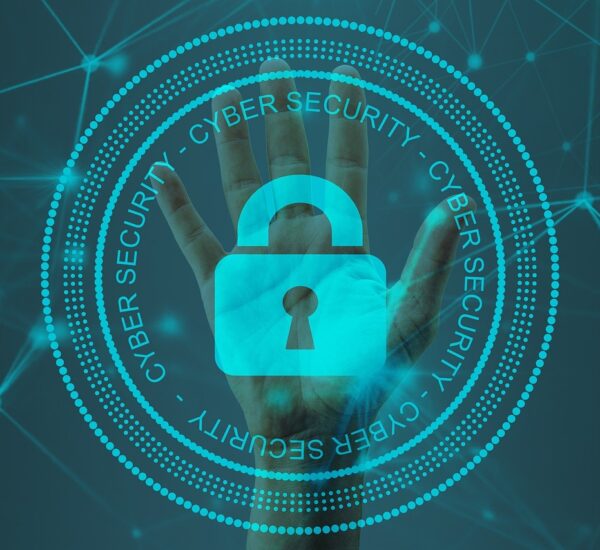End-to-end encrypted data is the process by which an algorithm is used to transform texts into a non-readable format. This means the data is scrambled so that only the sender and receiver can read it and not any third-party configuration. This lets only authorized users read the data as the encryption keys transform all the text characters into a format that is not readable by anyone else. Thus, end-to-end encryption secures communication from the initial starting point to the endpoint.
Table of Contents
Why is end-to-end encryption essential?
End-to-end encryption, or E2EE is used to ensure privacy is maintained among users. Failure to secure and protect private data has unfathomable consequences, as the data transferred among users often contain financial information, medical records, business documents, legal proceedings, and other personal conversations. Thus, a privacy breach can cause severe damage to the users.
End-to-end encryption can also protect data against cyber-attacks to a great extent. Apart from providing security and privacy, end-to-end encryption also provides its users with the control to access any authorized information or data that has been stored.
How is an end to end encryption used?
- Secure and protected communications: Several messaging apps like WhatsApp and Signal use end-to-end encryption to provide privacy to their users as the conversations between users are kept private. Email systems can be end-to-end encrypted, but it requires a Pretty Good Privacy or PGP encrypted configuration.
- Password Management: Several password managing sites or apps like LastPass and 1Password use end-to-end encryption to protect a user’s password. In this case, only the user can access the password.
- Data storage: Usually, storage devices provide end-to-end encryption at rest, but some service providers can offer end-to-end encryption in transit mode in the storage settings of a cloud. This will safeguard the users’ data against everyone, including the Cloud service providing company.
How does end-to-end encryption work?
End-to-end encryption uses cryptography which converts the textual characters into a form that is not readable, known as cipher text. Only authorized users can decipher or decrypt the texts mentioned above. The data can be secured symmetrically or symmetrically, depending on the service provider.
The primary difference between symmetric and asymmetric encryption is that the asymmetric or public key uses two several encryption keys or cryptographic keys to encrypt the data. In contrast, symmetric encryption uses only one secret key, which is used to decipher or decrypt the data.
Problems faced with End to end-encrypted data
- Endpoint security: Since end-to-end encryption only secures data at the endpoints, the endpoints become vulnerable to attacks. Thus, most enterprises enable endpoint security to protect data beyond transit.
- Man in the Middle or MITM attacks: Hackers can place themselves between two endpoints and collect or gather information to intercept the message. This technique doesn’t alert the sender or receiver about any privacy breach and, thus, is a threat to privacy even after using end-to-end encryption.
- Use of Backdoors: It does not matter if companies intentionally create backdoors in their encryption system as cyber attackers and hackers can use them to bypass the encryption system.
What can you expect from resetting end-to-end encryption?
End-to-end encryption ensures that only authorized users can fetch or access data that has been enabled. But, a key is required to access this secured data on trusted devices or platforms. This E2EE system uses two-factor authentication to verify the user’s identity before accessing data. However, if you fail to verify yourself as an authorized user or if the device is not trusted, you will need to reset end-to-end encrypted data.
Steps to reset end-to-end encrypted data
You need to be aware of the fact that once you reset end-to-end encryption on your iPhone, you will lose some data. However, the process to reset end-to-end encrypted data is quite simple and the following steps will guide you through the process if your iOS version is 11 or above.
Step1: Click on the Settings icon on your phone
Step 2: Under settings, go to General and find the Transfer or Reset option.
Step 3: Click on Reset from the above-mentioned, Transfer or Reset iPhone option.
Step 4: Select Reset all Settings. After you have clicked that, you will need to enter your Apple password to authenticate your action.
Step 5: Wait for a few seconds for the process of resetting your end-to-end encryption to complete.
Step 6: In case you need a new backup account, all you have to do is create one by connecting your iPhone to iTunes.
For the iOS version, the steps are shown below:
Step 1: Click on the settings icon on your phone
Step 2: Under settings, go to General and click Reset
Step 3: You need to select Erase All Content And Settings. Once you have selected that, you will need to give your Apple password to authenticate your move.
Step 4: Wait a minute for the process to be over. This will erase all the data from your iPhone including the encryption password.
Despite the security provided by E2EE, there are several limitations to it as well. Thus, if you want to reset end-to-end encrypted data, following the steps mentioned in this article will do you good, but be sure to know the types of data you will lose.




